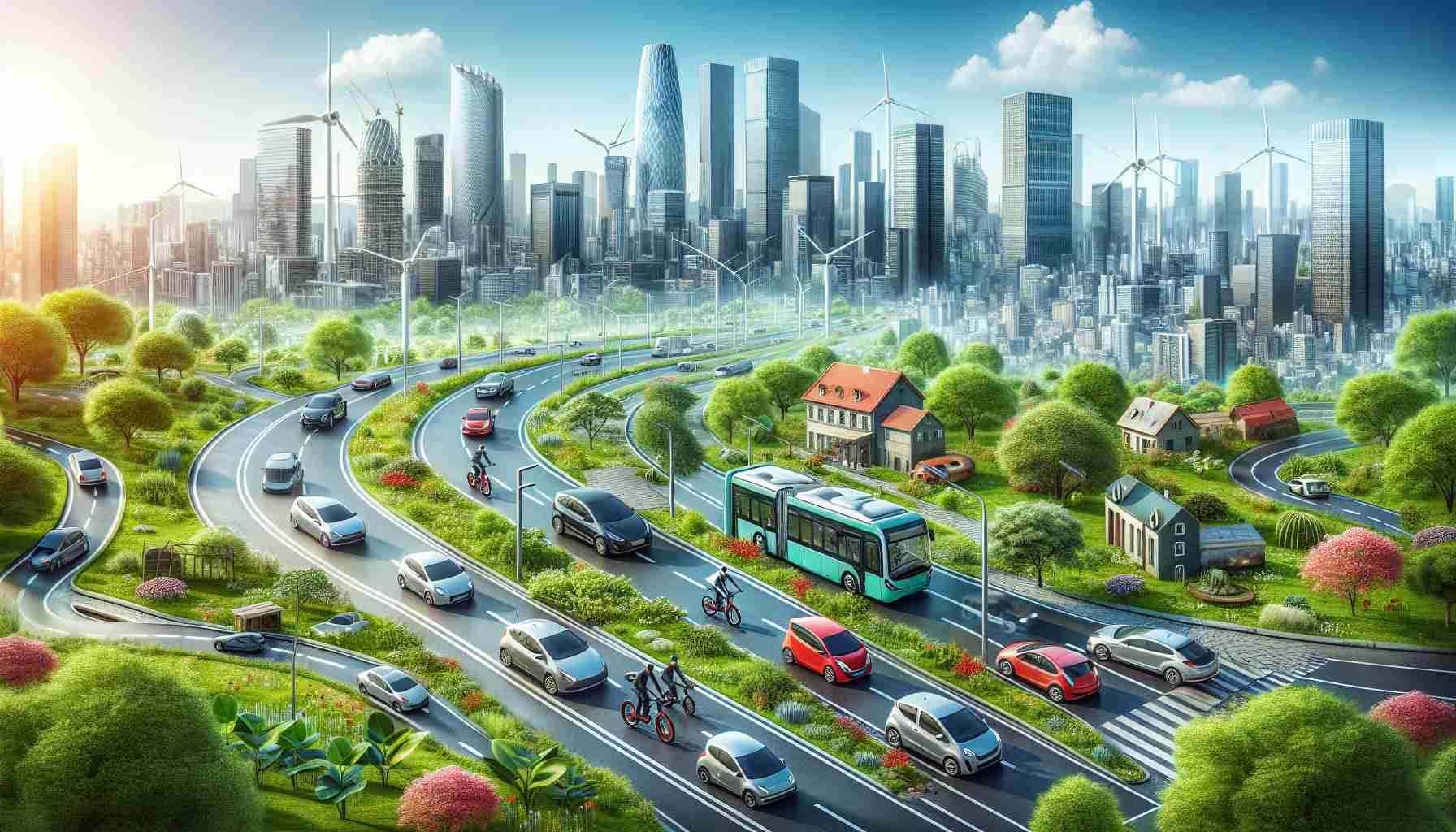- Electric vehicles (EVs) are set to play a crucial role in reducing global emissions from road transportation.
- Projected peak emissions of 9 gigatonnes by 2025 are expected to decline to 7.1 gigatonnes by 2050.
- A 25% increase in EV sales has occurred since 2021, with over 17 million expected in 2024.
- Half of all global car sales could be electric by 2035, significantly transforming the automotive market.
- Switching to EVs provides economic benefits and helps mitigate inflation.
- Reducing toxic emissions from vehicles can lead to improved public health and diminished healthcare costs.
- Transitioning to EVs is not only technological progress but also essential for community well-being.
A groundbreaking shift in the transportation sector is on the horizon as electric vehicles (EVs) surge to the forefront, promising to reverse decades of climate-damaging emissions. Recent research reveals that global emissions from road transportation could hit a peak of approximately 9 gigatonnes by 2025, before diving down to an impressive 7.1 gigatonnes by 2050. This significant decline is fueled by ambitious decarbonization policies being adopted worldwide, with EVs leading the charge.
Since 2021, transformative policies in key markets like the U.S., EU, and China have sparked a remarkable 25% increase in EV sales, pushing the total past 17 million vehicles in 2024 alone. Picture this: a vibrant future where half of all global car sales could be electric by 2035, drastically altering the automotive landscape. With charging cheaper than gas, consumers can save money while helping to stabilize the economy and combat rising inflation.
But it’s not just about cost savings; the proliferation of EVs has profound health implications. By reducing toxic emissions, we can clean our air and protect lives. Recent findings indicated that vehicle emissions were linked to an alarming number of premature deaths, costing society over $1 trillion in health impacts. Transitioning to EVs isn’t just an investment in technology; it’s a life-saving choice for communities.
As we stand at this crucial juncture, the call to action is clear: embrace the electric revolution today and pave the way for a sustainable, healthier tomorrow. The future is electric, and it’s charging forward—are you on board?
Revving Up the Future: Why Electric Vehicles are Driving More Than Just Innovation
Electric Vehicles: A Game-Changer in Sustainable Transportation
As electric vehicles (EVs) continue to surge in popularity and prominence, the implications reach far beyond just emissions reductions. While the original report highlighted the anticipated dip in global road transportation emissions and the rise in EV sales, several newer facets are essential for understanding the broader impact of this transformative shift.
1. Innovations and Technology Advancements
The development of battery technology is evolving rapidly, with solid-state batteries on the horizon promising greater efficiency, higher energy density, and faster charging times, enhancing the overall appeal of EVs. Additionally, advancements in autonomous driving technology are being integrated into EVs, providing an extra layer of interest for consumers and potential cost-savings in transportation.
2. Market Forecasts
Current trends suggest that by 2030, the global EV market could be worth $1.5 trillion, driven by increasing adoption rates in emerging markets. Countries like India and Brazil are projected to see considerable growth in EV sales as governments introduce incentives and infrastructure improvements to support the charging ecosystem.
3. Sustainability and Circular Economy
The lifecycle sustainability of EVs is increasingly coming into focus. Many manufacturers are now emphasizing the recyclability of their batteries, aiming to minimize waste and enhance resource recovery, which is crucial for promoting a circular economy. Companies are investing in technologies to recycle lithium and cobalt, critical components of EV batteries, thereby reducing environmental impact.
Frequently Asked Questions
Q1: How much does it cost to charge an electric vehicle compared to gasoline?
A1: On average, charging an electric vehicle costs about $0.05 per mile, compared to $0.14 per mile for gasoline vehicles. This means that EV owners can save significantly on fuel costs, particularly as gasoline prices fluctuate.
Q2: What health benefits are associated with the transition to electric vehicles?
A2: Transitioning to EVs can lead to significant public health improvements by reducing air pollution from toxic emissions. Studies have shown that the wider adoption of EVs could prevent thousands of premature deaths and reduce healthcare costs associated with pollution-related illnesses.
Q3: What government policies are driving the adoption of electric vehicles?
A3: Governments across the globe are implementing strong incentives for EV purchases, including tax rebates, grants, and the development of charging infrastructure. Some countries have also set ambitious goals for phasing out internal combustion engines entirely, further accelerating the market shift toward electric vehicles.
Conclusion
The transition to electric vehicles represents more than just a technological advancement; it is a pivotal movement towards sustainability, public health, and economic stability. With growing investments in EV technology, supportive policies, and increasing consumer acceptance, the electric revolution is not just a possibility—it’s becoming a reality.
Learn more about electric vehicles














